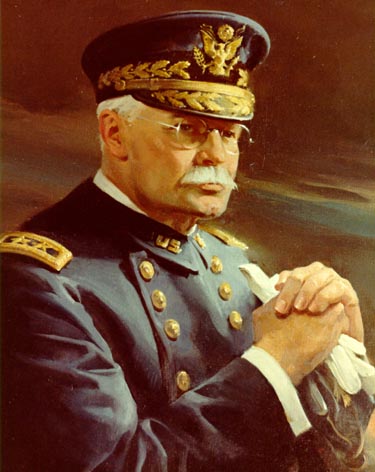
Hugh Lenox Scott was born at Danville, Kentucky, on 22 September 1853; graduated from the United States Military Academy, 1876; was commissioned a second lieutenant and assigned to the 9th Cavalry, June 1876, assuming that month a vacancy in the 7th Cavalry created by Little Bighorn battle casualties; was stationed at various posts in Dakota Territory and participated in the Nez Percé campaign, 1877; was promoted to first lieutenant, June 1878, and engaged in scouting and constructing telegraph lines, 1879–1882; married Mary Merrill, 1880; studied and became an authority on the language, customs, and history of the Plains Indians; served on an exploring expedition with the Geological Survey, 1884; was on recruiting service, 1886–1888; was on duty at Fort Sill and scouting in the Central Plains, 1889; served in the Sioux outbreak of 1890, being involved in actions at Porcupine, Wounded Knee, and White Clay Creeks; organized and commanded Troop L (composed of Kiowa, Comanche, and Apache Indians), 7th Cavalry, at Fort Sill, 1892–1897; was promoted to captain, 1895; was in charge of Geronimo’s band of Chiricahua prisoners of war, 1894–1897; was assigned to the Adjutant General’s Department to work on the Indian sign language, 1897–1898; was promoted to major of volunteers and assigned as assistant adjutant general, I Corps, 1898–1899; became lieutenant colonel of volunteers and assistant adjutant general on the staff of the military governor of Cuba, 1899–1900; was military governor of Sulu Archipelago, Philippines, and commander of the Jolo military post, 1903–1906; was wounded in action at Crater Lake while campaigning against the Moros, November 1903; was superintendent of the United States Military Academy, 1906–1910; served in the Office of the Chief of Staff, 1911; dealt with problems of various Indian tribes, 1908–1915; was promoted to lieutenant colonel (March) and colonel (August), 1911; commanded the 3d Cavalry, 1912, and the 2d Cavalry Brigade, 1913–1914, on the Mexican border; was assistant chief of staff of the United States Army, 1914; was promoted to brigadier general, March 1913, and major general, April 1915; was chief of staff of the United States Army, 16 November 1914–21 September 1917; supervised the concentration of troops on the Mexican border preliminary to the Punitive Expedition; laid the foundations for mobilizing, training, and equipping the Army for World War I; espoused conscription over a volunteer system for the Army; was a member of the Root commission to Russia, 1917; retired from active duty, September 1917, but was recalled to inspect the battlefront in Europe; commanded the 78th Division and Camp Dix, 1918; retired permanently from the Army, May 1919; was a member of the Board of Indian Commissioners, 1919–1920; died in Washington, D.C., on 30 April 1934.
The Artist
Robert Oliver Skemp (1910), portraitist and muralist, studied at the Art Students League under Thomas Hart Benton, Frank Vincent DuMond, and Robert Laurent; at the Grand Central Art School under Harry Ballinger and Pruett Carter; and at the George Luks and Charles Baskerville studios. He enlarged upon this background with study in France and Spain. Mr. Skemp maintains studios at Westport, Connecticut, and Amagansett, New York. He has won a number of awards and is represented in numerous collections. Among his prominent subjects are J. Paul Getty of Getty Oil Corporation, Walter Wriston of Citibank, and Donald Regan, chairman of the board of Merrill Lynch.
Hugh Lenox Scott
By Robert Oliver Skemp
Oil on canvas, 36" x 30", 1973
[104]

page updated 30 April 2001